Art
Smog Rings
Dutch artist Daan Roosegaarde has come up with a plan to use "patented ion technology" in order to create the world's largest smog vacuum cleaner. He'll then place his smog vacuum in a Beijing park, start vacuuming up the smog, and turn the dirt and dust he collects into "smog rings." More info at his site.
Posted By: Alex - Thu Oct 23, 2014 -
Comments (6)
Category: Art, Jewelry, Urban Life
Radish Animals
A new book going on sale soon in Japan teaches the art of making "radish animals." All you need is a pile of grated daikon radish. Then mold it into the shape of whatever animal strikes your fancy. And delight and amuse your guests. [via RocketNews24]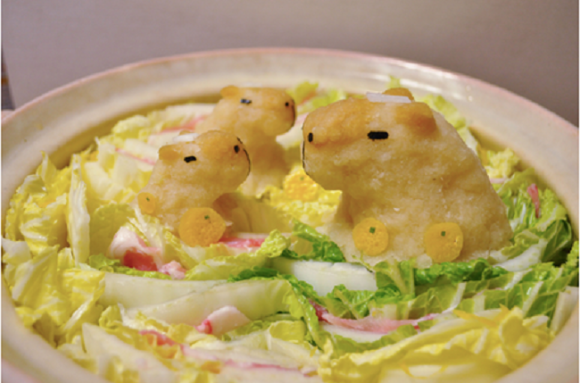
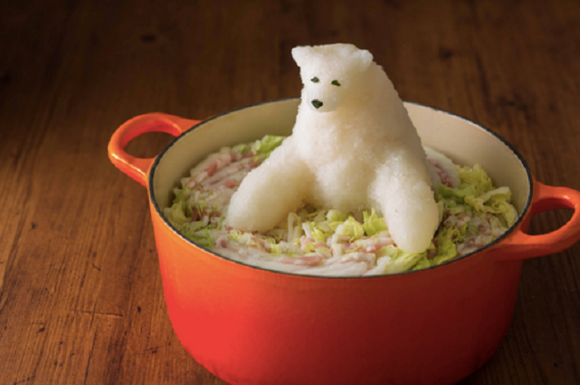

Posted By: Alex - Sun Oct 19, 2014 -
Comments (3)
Category: Animals, Art, Food
Painter of Nuts
Most people see peanuts as just something to eat, but artist Steve Casino sees them as a canvas. He paints them to look like celebrities. And one of his painted nuts costs anywhere between $300 to $1000. Check out more of his work at his website.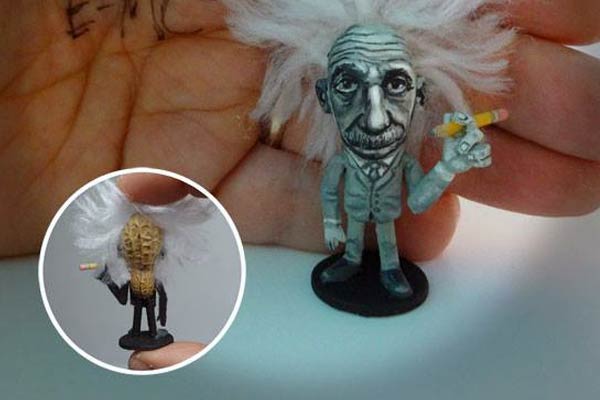
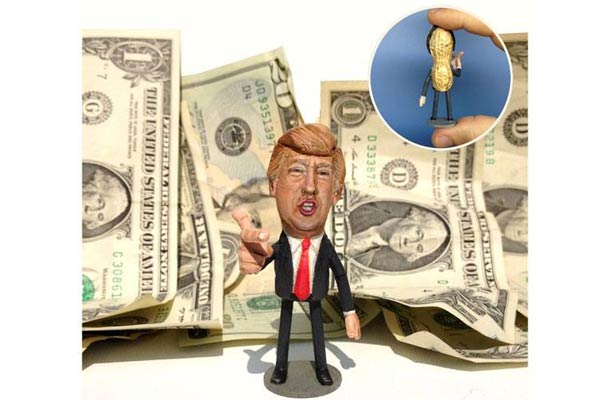
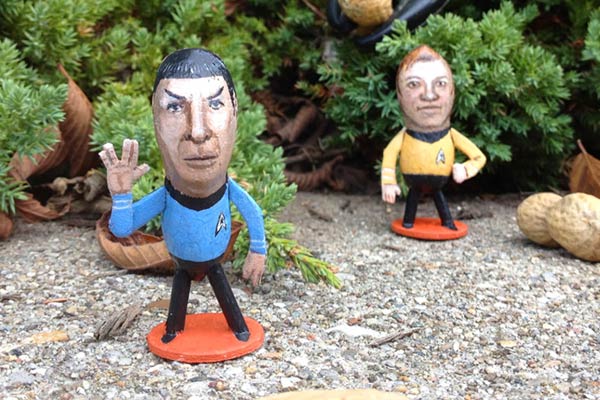
Posted By: Alex - Tue Oct 14, 2014 -
Comments (6)
Category: Art
Firehose Art
If you go to the Manhattan Bridge Archway in New York City tomorrow, you can witness artist "Dread Scott" repeatedly trying to walk into the blast of a high-pressure water hose. He calls this performance "On the Impossibility of Freedom in a Country Founded on Slavery and Genocide." As you watch it, you're supposed to be reminded of crowd control tactics of the past and think about the ongoing struggle for equality. At least, that's the official takeaway.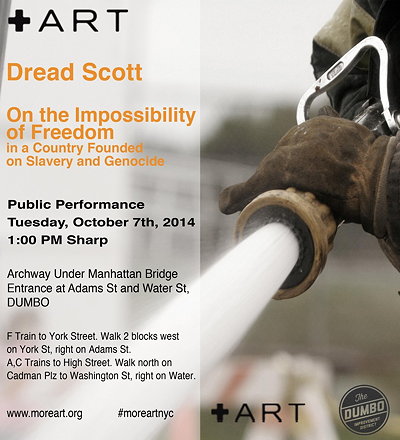
Posted By: Alex - Mon Oct 06, 2014 -
Comments (5)
Category: Art, Performance Art
Business School for Bacteria
Artist Jonathon Keats is back with a new project. He's opening a business school for bacteria. More details at modernisminc.com.

Microbial Associates Announces Complete Executive Training For Bacteria -- Microbes Available For Employment At October Launch Event
September 25, 2014 -- Creatively stifled by insular hiring practices, and struggling to distinguish themselves in an increasingly competitive marketplace, Silicon Valley technology companies are bracing for the first opportunity to radically diversify their executive workforce next month. On Tuesday, October 21st, approximately 100 billion bacteria will be certified in fields ranging from management to finance to product development by Microbial Associates, the only corporate consultancy in the world fostering successful business relationships between humans and prokaryotes.
"Bacteria are the most industrious organisms on the planet, and also the most creative," says experimental philosopher Jonathon Keats, founder and managing director of Microbial Associates. "Forming mountains and oxygenating the atmosphere, they literally made the world in which we live. Just imagine if Google or Facebook were to leverage that world-changing talent."
Mr. Keats is not surprised that bacteria have been overlooked by human resources departments. "Microbes are microscopic," he observes. Moreover they've never been educated for business, credentialed for employment, or prepared for recruitment. Microbial Associates will provide all three services in their offices at San Francisco's Modernism Gallery, where bacteria can be hired for as little as one billionth of a cent per hour.
Business lessons will be provided to bacterial populations in state-of-the-art Pyrex classrooms using chemotactic and galvanotactic techniques developed by Mr. Keats and piloted at Amherst College. "Chemotaxis and galvanotaxis are some of the primary ways bacteria sense their environment," Mr. Keats explains. "By modulating the flow of chemicals and electricity in vitro, we can demonstrate essential principles such as supply-and-demand and strategic planning." For instance, bacteria learn about supply curves by being pumped in and out of equilibrium, giving them the direct experience of a concept most CFOs grasp only in the abstract.
"The bacteria end up knowing more than many executives I've met," says Stanley Bing, Fortune Magazine columnist and author of The Curriculum, who serves as a Microbial Associates advisor. No special background is needed. "We can work with almost any species of bacteria," claims Mr. Keats, "even those in corporate lunchrooms."
Nor is enrollment limited. Because each bacterial cell is less than ten microns long, classroom throughput is more than a billion bacteria at a time, far surpassing the technological capacity of any MOOC. This small scale is also beneficial for employers in a highly competitive real estate market. Trillions of bacteria can fit inside a single cubicle.
Mr. Keats stresses that his biochemical curriculum -- which culminates in official certification and job placement for graduating bacteria -- is intended only to help microbes adjust to the human workplace. "They need to be familiar with how we think in order to gain acceptance as colleagues," he says. "But their real benefit to companies will derive from their innate skill set. Diversity breeds innovation, disrupting the creative monotony of the corporate monoculture. Systems evolved by bacteria can vastly enhance any startup or megacorporation."
Key examples of bacterial business savvy include quorum sensing and horizontal gene transfer. The former allows bacteria to respond dynamically to new opportunities regardless of population size, a crucial skill that most companies lose as they grow. The latter lets bacteria creatively recombine innovations in a changing environment, avoiding the gridlock of corporate patent disputes. Microbial Associates' strategic consultants can deliver these business principles to any boardroom -- from Silicon Valley to New York City --with or without a team of bacterial employees.
"We've learned from bacteria to be highly adaptive," says Mr. Keats. "Microbial Associates can accommodate the needs of any company and we're confident that all can gain from it. Bacteria are eons ahead of us in real-world experience. Perhaps they can even train us how to live and work sustainably in the world they invented."
Posted By: Alex - Sat Oct 04, 2014 -
Comments (3)
Category: Art, Business, Universities, Colleges, Private Schools and Academia
A spoon made of tiny spoons
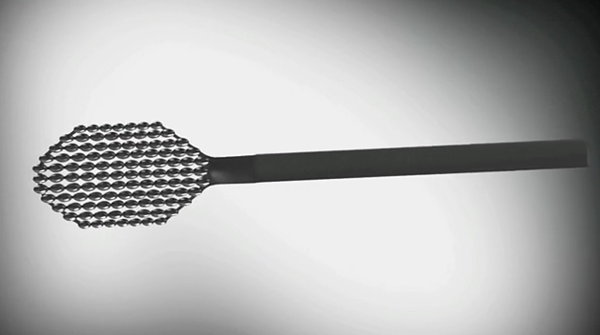
This is one of the "nonobjects" featured in the book "Nonobject" by Branko Lukic and Barry Katz. The book description says it's about objects whose design "started not from the object but from the space between people and the objects they use." I think this means it's about objects whose design is useless but whimsical.
Other Nonobjects include "a 'superpractical' cell phone with keypad, speaker, and microphone on every surface," a square motorcycle, and an umbrella that sends rain rushing through the handle from an upturned top. More at the site nonobjectbook.com.
Posted By: Alex - Tue Sep 30, 2014 -
Comments (3)
Category: Art, Design and Designers
Alvaro Franca’s Typewriter Art
I've posted before about a typewriter artist, but here's another one — Alvaro Franca of Rio de Janeiro.But I noticed that Franca uses a computer image to guide him. Isn't that like the typewriter art version of paint-by-numbers?
Posted By: Alex - Mon Sep 29, 2014 -
Comments (6)
Category: Art
Microwaved iPhone
Artist Kenny Irwin is selling a microwaved gold iPhone 6 on eBay for $6,660. Yes, he purposefully microwaved it. He's also signed and dated his creation. Irwin warns that, "Winner bidder will receive two NO A LONGER WORKING iPHONE because IT HAS BEEN MICROWAVED."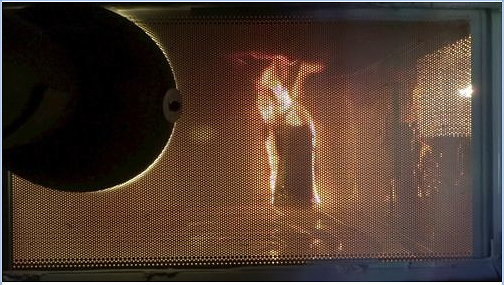
Posted By: Alex - Mon Sep 22, 2014 -
Comments (5)
Category: Art, Telephones
Taking Manscaping To The Next Level
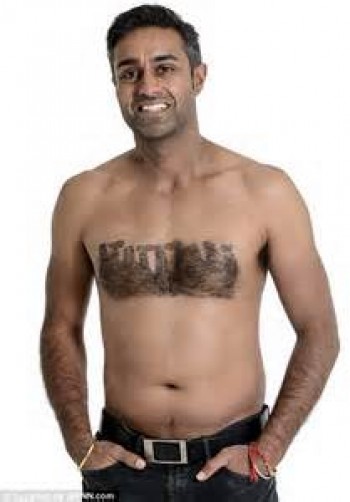
Daniel Johnson, a famous British hair stylist is taking manscaping to the next level with the intricate chest hair designs like the one pictured above. More interesting examples after the jump.
Posted By: Alex - Fri Sep 12, 2014 -
Comments (5)
Category: Art, Hair and Hairstyling
Anti-Terrorism Coloring Book
Published by Really Big Coloring Books, which is hoping they'll be included in schools' curricula throughout the country. Though so far, it appears, no schools have taken them up on the offer. More info at NY Daily News.

Posted By: Alex - Wed Sep 03, 2014 -
Comments (9)
Category: Art, Terrorism and Terrorists, Children

| Who We Are |
|---|
| Alex Boese Alex is the creator and curator of the Museum of Hoaxes. He's also the author of various weird, non-fiction, science-themed books such as Elephants on Acid and Psychedelic Apes. Paul Di Filippo Paul has been paid to put weird ideas into fictional form for over thirty years, in his career as a noted science fiction writer. He has recently begun blogging on many curious topics with three fellow writers at The Inferior 4+1. Contact Us |





